Concorde
Art Hobby Sky
Terry
2.0 1.1 1.0
Seeker
Wild Thing
Koleos-E
Aero Ace
All planes…
![]() Concorde
Concorde
![]()
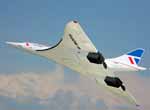 Departing JFK for Blighty |
 Buzzing the soybeans |
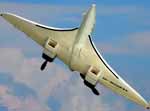 The original was noisier |
 Flanging twin-motor sound (17") |
 Into the sunset |
 Black props visible only at fast shutter speeds |
 Side view |
 Shiny beats foamy |
 Electric-trigger pedal launcher |
 Bathrobe over PVC pipe |
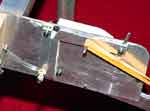 Sp400 motor whacks crossbow-like release |
 Everything fits on my bike |
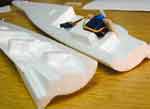 Plates and fillers for micro servos |
 FMA M5 rx, 4x HS-55 servos |
 Oak towhook hardpoint, velcro battery holder |
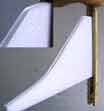 Fin edges notched, folded, glued and clamped |
 Dymond D50 ESC, motors in parallel |
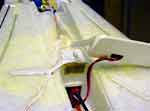 Tyvek hatch hinge, carbon+glass hardpoint |
 Depron-filled divots, glassed nacelles |
 Nose spar; uncovered/covered |
|
Robbe Concorde.
Twin speed-400 foamie.
Built 2004, flown 2006-7.
1992-96 British Airways livery. On the tail, a stylized Union flag. Along the fuselage, a simplified "Speedbird" flourish. The nose doesn't droop (instead it flips up just forward of the spar on a botched landing, easily repaired). 80 cm span. About 32 oz, depending on battery. 3s lipo, twin speed-400 direct drive Gunther spoon props. At 25 A full throttle, silly vertical climbs are possible.
Covered with Oracover-Lite heat-shrink film.
2 oz of lead in the nose compensates for that weight.
Four-servo modification lets elevator help ailerons and vice versa, and allows differential aileron to reduce adverse yaw. It also allows "crow" braking, which isn't strictly necessary since a delta wing can flare mightily and keep control. Still, landings are more realistic when the nose stays below 20 degrees.
|
|||